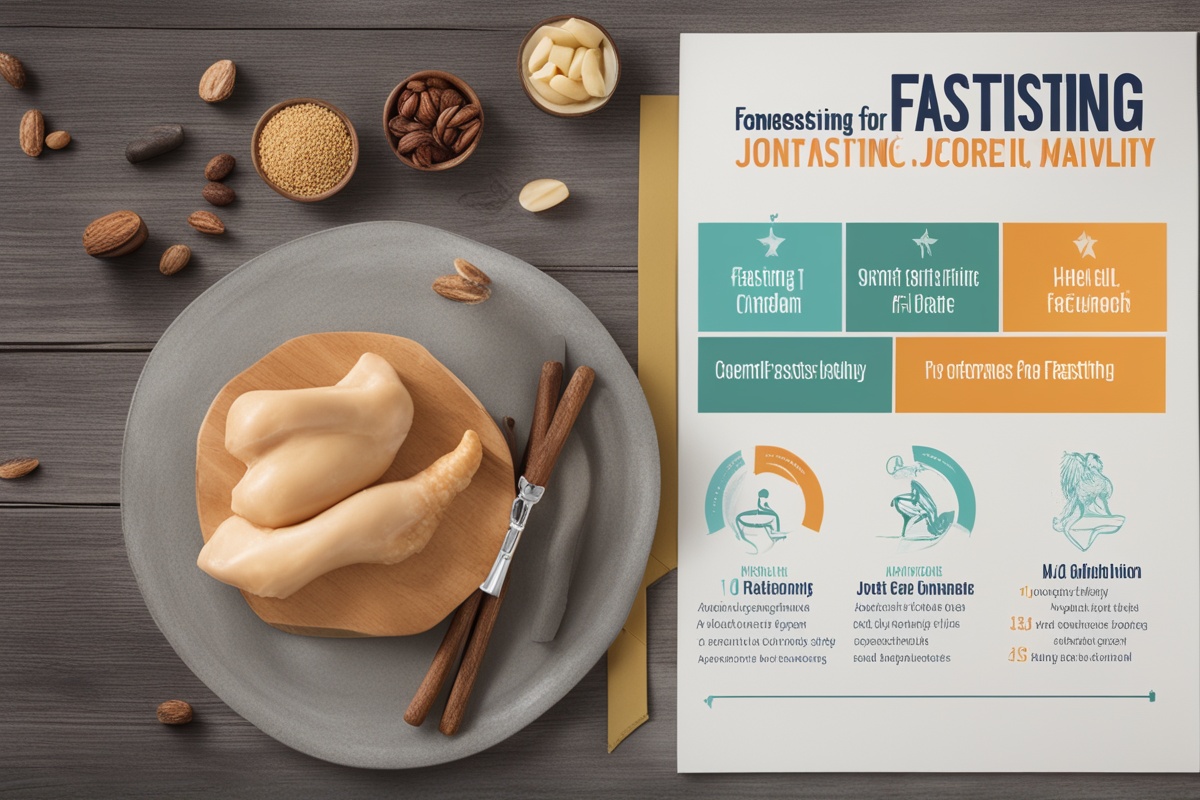Intermittent fasting (IF) has gained significant attention in recent years for its potential health benefits, ranging from weight loss to improved metabolic health. However, one area that is increasingly being explored is the connection between intermittent fasting and joint health. For those suffering from joint pain or conditions like arthritis, the idea of finding relief through a dietary approach such as intermittent fasting is incredibly appealing. In this comprehensive guide, we will delve into the Intermittent Fasting Joint Relief Benefits, exploring how this eating pattern may help reduce inflammation, support joint repair, and improve overall mobility.
What Is Intermittent Fasting and How Does It Work?
Intermittent fasting is not a diet in the traditional sense but rather an eating pattern that alternates between periods of eating and fasting. Common methods include the 16/8 method (fasting for 16 hours and eating during an 8-hour window), the 5:2 diet (eating normally for five days and significantly reducing calorie intake on two non-consecutive days), and alternate-day fasting. During fasting periods, the body undergoes several physiological changes, such as improved insulin sensitivity, reduced inflammation, and enhanced cellular repair processes like autophagy.
These mechanisms are believed to play a crucial role in promoting overall health, including joint health. By giving the digestive system a break, intermittent fasting may help lower systemic inflammation, which is a key driver of joint pain and stiffness in conditions like rheumatoid arthritis and osteoarthritis. Understanding these processes is essential to grasping the potential Intermittent Fasting Joint Relief Benefits.
How Intermittent Fasting Reduces Inflammation in Joints
Inflammation is at the core of many joint-related issues. Chronic inflammation can damage cartilage, exacerbate pain, and reduce mobility over time. Research suggests that intermittent fasting can help lower levels of pro-inflammatory markers in the body, such as C-reactive protein (CRP) and interleukin-6 (IL-6). By reducing these markers, IF may alleviate the inflammatory burden on joints, providing relief to individuals with chronic joint conditions.
During fasting, the body shifts into a state of ketosis, where it burns fat for fuel instead of glucose. This metabolic switch has been linked to decreased inflammation and oxidative stress, both of which contribute to joint degradation. For those exploring natural ways to manage joint pain, the anti-inflammatory effects of intermittent fasting could be a game-changer. To learn more about inflammation and dietary strategies, check out our post on Nutrition for Joint Health.
Intermittent Fasting and Weight Loss: A Joint-Friendly Connection
Excess body weight places significant stress on weight-bearing joints like the knees and hips. Losing weight can dramatically reduce this pressure, thereby decreasing pain and improving mobility. Intermittent fasting is a proven tool for weight management, as it helps control calorie intake and boosts metabolism. By shedding excess pounds through IF, individuals may experience substantial joint relief, especially in cases of osteoarthritis, where weight loss is often recommended as a primary intervention.
The Intermittent Fasting Joint Relief Benefits tied to weight loss are particularly relevant for older adults or those with sedentary lifestyles. Combining IF with light exercise can further enhance these benefits. For tips on incorporating movement into your routine, see our guide on Low-Impact Exercises for Joints.
Autophagy and Joint Tissue Repair Through Fasting
One of the most fascinating aspects of intermittent fasting is its ability to stimulate autophagy, a cellular process where the body cleans out damaged cells and regenerates new, healthy ones. This “self-cleaning” mechanism is vital for maintaining the integrity of joint tissues, including cartilage and synovial fluid, which lubricate and protect joints. Over time, damaged joint tissues can lead to pain and stiffness, but autophagy may help slow this degeneration by removing dysfunctional components and promoting repair.
For individuals with degenerative joint conditions, the potential of intermittent fasting to enhance autophagy offers hope for natural pain management. While more research is needed to fully understand this connection, early studies suggest that fasting could support long-term joint health. If you’re curious about other natural remedies for joint repair, explore our article on Herbal Remedies for Joint Pain.
Improved Metabolic Health and Its Impact on Joints
Metabolic health plays a significant role in joint function. Poor metabolic health, often characterized by insulin resistance and high blood sugar levels, can contribute to systemic inflammation and worsen joint conditions. Intermittent fasting has been shown to improve insulin sensitivity and regulate blood sugar, which may indirectly benefit joint health by reducing inflammation and oxidative stress.
Additionally, better metabolic health can lead to improved energy levels and reduced fatigue, making it easier to stay active and support joint mobility. The Intermittent Fasting Joint Relief Benefits extend beyond direct effects on joints, offering a holistic approach to wellness. For more insights on metabolism and joint health, read our post on Metabolic Health and Joints.
Practical Tips for Starting Intermittent Fasting for Joint Relief
If you’re new to intermittent fasting and want to explore its potential benefits for joint health, it’s important to start slowly and consult with a healthcare professional, especially if you have pre-existing medical conditions. Here are some practical tips to get started:
- Choose a Sustainable Method: Start with the 16/8 method, fasting for 16 hours overnight and eating during an 8-hour window during the day.
- Stay Hydrated: Drink plenty of water during fasting periods to support joint lubrication and overall health.
- Focus on Nutrient-Dense Foods: When breaking your fast, prioritize anti-inflammatory foods like fatty fish, leafy greens, and nuts to maximize joint benefits.
- Listen to Your Body: If you experience dizziness or extreme fatigue, adjust your fasting schedule or seek medical advice.
- Combine with Gentle Exercise: Incorporate low-impact activities like yoga or swimming to support joint mobility without overexertion. Learn more in our guide on Yoga for Joint Health.
By following these tips, you can safely explore the Intermittent Fasting Joint Relief Benefits while minimizing potential risks.
Disclaimer: The information provided in this article is for educational purposes only and should not be considered medical advice. Intermittent fasting may not be suitable for everyone, especially those with certain medical conditions, pregnant or breastfeeding individuals, or those on specific medications. Always consult with a healthcare professional or registered dietitian before starting any new dietary or fasting regimen to ensure it is safe and appropriate for your individual health needs.
References
- Longo, V. D., & Mattson, M. P. (2014). Fasting: Molecular Mechanisms and Clinical Applications. Cell Metabolism.
- Arthritis Foundation. (n.d.). Weight Loss and Arthritis.
- Harvard Health Publishing. (2018). Intermittent Fasting: Surprising Update.
- de Cabo, R., & Mattson, M. P. (2019). Effects of Intermittent Fasting on Health, Aging, and Disease. New England Journal of Medicine.
- Mayo Clinic. (n.d.). Intermittent Fasting: What Is It, and How Does It Work?
This content is for informational purposes only and not a substitute for professional advice.






